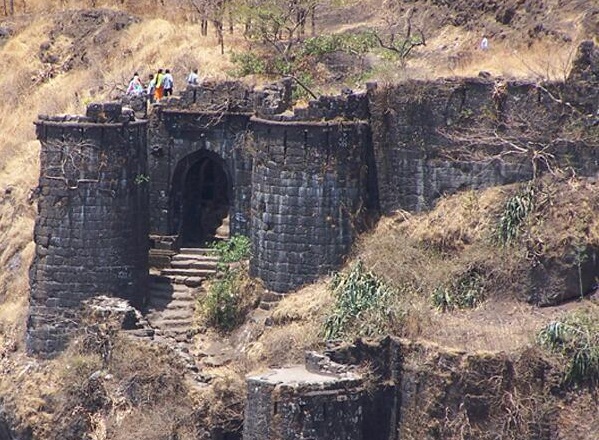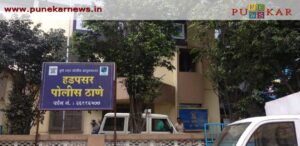Tourist Accommodations To Come Up At Sinhgad Fort, Akkalkot In One Month: MTDC

Pune, January 18, 2021: After the lockdown, people are flocking to tourist destinations. According to Maharashtra Tourism Development Corporation (MTDC), in Pune division, most people are visiting Panshet, Karla (Lonavla), Matheran, Malshej Ghat, Koynanagar, Mahabaleshwar and Bhimashankar.
“Now MTDC will provide accommodation for tourists and devotees at Akkalkot in Solapur district and Sinhgad Fort in Pune district in the next one month. Akkalkot accommodation will have seven rooms and Sinhgad will have three rooms with two lodges and a restaurant. Sinhgad also has a museum of the MTDC and an open amphitheatre for men’s sports. Men’s games and arts from various groups will be organized at this place in the near future”, informed Deepak Harne, Territorial Manager, Pune.
As one of the top military outposts during the reign of Chhatrapati Shivaji Maharaj, the fort of Sinhgad not only offers a fascinating peek into the history of the Maratha Empire but is also a perennial favourite with trekkers and the residents of Pune because of its proximity to the city. While standing atop the hill and taking in the panoramic view of the landscape below, you cannot help but wonder at the vision of those who built such imposing structures at such great heights.
Sinhgad, the literal translation of which would be The Lion’s Fort, is just about 30 kilometres southwest of the city of Pune. It was previously called Kondana and its historical importance is related to it being the site of many an important battle. Sinhgad was also important because of its strategic location perched on an isolated cliff of the Bhuleswar range of the Sahyadri Mountains, 1,312 meters above sea level. The fort is ‘naturally’ protected due to its very steep slopes. As such, walls and bastions were constructed at only key places.
As per the records, the fort was constructed approximately 1,500-2,000 years ago and it is said that the name Kondana was derived from the name of a monk called Kaundinya. A Farsi poem of 1350 titled ‘Shahanama-E-Hind’ has a reference to Sinhgad as ‘Kundhna’. Sinhgad was a witness to the first invasion on Maharashtra in 1340 when Mohammed bin Tughalak attempted to capture the fort, which at that time was under the rule of Nag Naik, a tribal chieftain who fought courageously against the Turks for eight months before relinquishing possession.
For the next 300 years, Sinhgad came under the rule of different Muslim dynasties. In 1665, as per the Treaty of Purandar, Shivaji handed over Sinhgad to the Mughals. In 1670, he waged war against the Mughals and the responsibility of regaining control over the fort was given to his loyal general, Tanaji Malusare. Thus was waged one of the fiercest battles of those times. It is said that a steep cliff leading to the fort was scaled with the help of a monitor lizard locally known as a ‘ghorpad’. Tanaji lost his life but his brother Suryaji Malusare took over and captured Kondana. There is an anecdote that upon hearing of Tanaji’s death, Shivaji expressed his sorrow with the words: ‘Gad aala pan sinha gela’ (We gained the fort, but lost the lion). Thus the fort came to be called the Lion’s fort.
Some of the spots that you must visit and learn about in the fort are the ‘samadhi’ of Chhatrapati Rajaram Maharaj, the Lokmanya Tilak Smarak, the samadhi of Tanaji Malusare, Amruteshwar Temple, Kondhaneshwar Temple, the series of three doors known as Pune Darwaja, Kalyan Darwaja, and a stone-carved water cistern known as Devtake.
There is a good motorable road that leads right up to the top. And apart from the excellent views of the city and the Sahaydri Mountains, the fort is also a popular hangout because of the vendors who sell a local delicacy called ‘pithla bhakari’ and curds. On a clear day you can also see the forts of Torna, Rajgad and Purandar. The MTDC has lodging and boarding facility at Khanapur Road. There is a guesthouse of the Department of Forests on the fort premises while many privately owned bungalows and cottages at the base of the hill offer good staying facilities with meals.
How to reach
Air
The nearest airport is at Pune.
Rail
Pune railway station is the nearest rail head which is well connected by rail to all the major cities.
Road
Singhgad is 30 kms from Pune. Small vehicles can go upto the top of the fort. Buses can reach upto the foothill of the fort and then one has to climb the fort. It takes about 2 hours to go the top.





